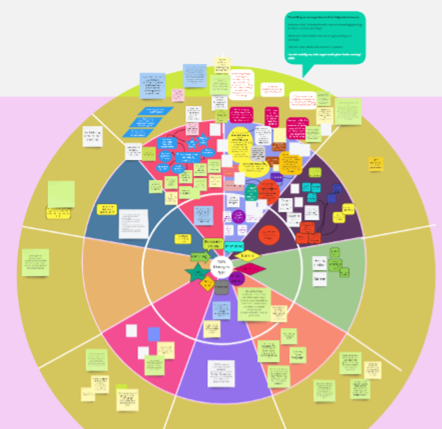The ACED Project
The National Gallery of Arts have knowledge of their visitors and of how many visitors they need for a given exhibition. Previously, consultants have focused on the necessary economical progressions but the curatorial processes haven't been questioned, nor have the considerations of audiences been prioritized until late in the shaping of the exhibition. The communication and educational teams found that they sometimes doubled up, working in parallel without coordination. The front desk and security staff also needed to know more about the audiences and the curatorial and educational staff to know more about their challenges. All four groups find that the effectiveness of the process of shaping and building the exhibitions would benefit from an earlier exchange of ideas and thoughts between these various departments. Using the Wheel of Consideration they were able to do this.

Outcomes
There has been a vivid discussion and an opening up of exchange between more groups than before. It has empowered the staff and made visible the workload and knowledge of the departments such as the practical, logistical and front desks as well as the educational and communication teams. The curatorial groups as presented by one scholar had an opportunity to reflect on what a curatorial method could be if all the other groups were to be considered early in the process. The thoughts and emotions around this were quite ambiguous.
Learning
The work group was happy with the creativity of processing that the ACED module offered, with its playfulness and unpretentiousness. It helped ease the preoccupations of “am I professional enough” and enabled the staff to leave their everyday tasks to express more directly how they might transform ideas into an efficient, productive, and creative prototype, putting the audience’s experience at the centre. The facilitators had to work quickly with the group due to the time pressure of the process. They therefore chose to focus on 1) Unfreeze, 2) Empathy 3) Prototyping. The ideation was done separately presenting the group with three different takes: 1) The creation of a Wheel of Consideration, 2) An extension of the exhibition note that will circulate and inform the entire work process and the different work teams, 3) An initial meeting for all the work groups for inclusion of a magnitude of knowledge across the departments.

